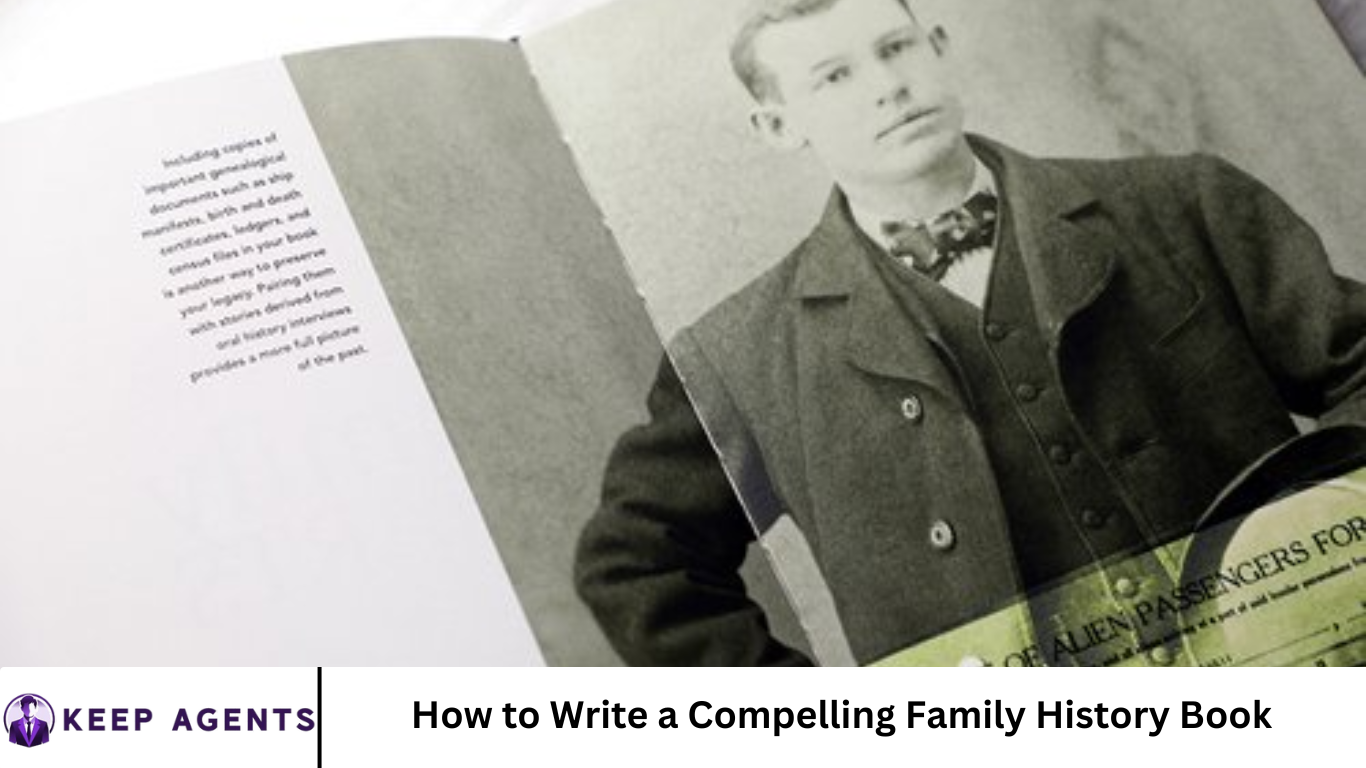Writing a family history book is a deeply rewarding endeavor. It allows you to preserve personal stories, uncover fascinating ancestral narratives, and create a legacy for future generations. But how do you write a family history that is more than just a list of names and dates? How do you craft a compelling story that engages readers and honors your heritage?
This comprehensive guide will walk you through the essential steps of writing a compelling family history book. Whether you’re just beginning your genealogical journey or you’re ready to transform years of research into a published work, these strategies will help you write a meaningful and memorable family history.
More Read: 55 Heartfelt Ways to Celebrate a Life Well Lived
Why Write a Family History Book?
Before diving into the how, it’s important to understand the why. Writing a family history book offers numerous benefits:
- Preserve Legacy: Capturing family stories ensures that future generations know where they come from.
- Discover Connections: Researching your family tree often reveals surprising connections and untold stories.
- Create Meaning: Turning genealogical data into a narrative helps make sense of the past.
- Strengthen Family Bonds: Sharing a family history book can bring relatives closer together.
Step 1: Define Your Purpose and Audience
Start by clarifying the purpose of your book. Is it a gift for family members? A formal genealogical record? A personal exploration?
Also, consider your audience:
- Are you writing for children and grandchildren?
- Are you aiming for publication beyond your family?
- Will your audience be genealogists or casual readers?
Your purpose and audience will shape the tone, content, and structure of your book.
Step 2: Gather Your Material
To write a rich family history, you need a solid foundation of information. Begin by collecting:
Genealogical Records
- Birth, marriage, and death certificates
- Census data
- Immigration and naturalization records
- Military service records
Oral Histories
- Interview relatives for stories, memories, and personal anecdotes
- Record conversations if possible, and transcribe them
Photos and Memorabilia
- Old photographs, letters, diaries, and heirlooms add texture and authenticity
Historical Context
- Understand the broader historical events that affected your ancestors (wars, migrations, economic changes)
Organize your materials using genealogy software, spreadsheets, or even old-fashioned file folders.
Step 3: Choose a Structure
Decide how you want to organize your book. Common structures include:
- Chronological: Telling the story generation by generation
- Thematic: Focusing on specific topics (e.g., immigration, military service, family traditions)
- Biographical: Writing detailed profiles of key ancestors
- Geographical: Organizing the story based on locations
Choose the structure that best supports your material and goals.
Step 4: Develop a Narrative Style
The key to a compelling family history book is storytelling. Instead of simply listing facts, bring your ancestors to life. Here’s how:
Use Vivid Descriptions
Describe places, clothing, jobs, and living conditions. Help readers visualize the world your ancestors lived in.
Add Dialogue
Recreate conversations based on oral histories or letters (with a note clarifying when dialogue is speculative).
Highlight Conflict and Triumph
What obstacles did your ancestors face? How did they overcome them? Every good story includes challenges and victories.
Include Emotions and Reflections
Share your thoughts and reactions. Why does a particular story matter to you?
Step 5: Write, Revise, Repeat
Writing is a process. Don’t expect to get it perfect the first time. Follow these steps:
- Start with a draft: Focus on getting your ideas down
- Revise for clarity and flow: Ensure your narrative makes sense and keeps readers engaged
- Edit for grammar and style: Consider hiring a professional editor
- Fact-check: Verify names, dates, and events
Step 6: Incorporate Visual Elements
Images and documents enrich your book and make it more engaging. Consider including:
- Family trees and charts
- Maps showing migrations or home locations
- Photographs of people, homes, and documents
- Scans of letters, certificates, or heirlooms
Make sure to use high-quality scans and label everything clearly.
Step 7: Add Historical Context
Your ancestors didn’t live in a vacuum. Situating their lives within broader historical events makes your book more informative and engaging.
- What was happening in the world when your ancestors lived?
- How did events like the Great Depression or World Wars impact their lives?
- Use local history to add depth to their daily experiences
Step 8: Choose a Format and Publish
Decide how you want to publish your book:
- Print-on-Demand: Services like Amazon KDP or IngramSpark offer easy options for self-publishing
- Photo Books: Great for image-heavy projects, through sites like Shutterfly or Mixbook
- Ebooks: Make your history accessible on tablets and e-readers
- Private Publishing: Share only with family using printed copies or digital PDFs
Ensure your book is well-designed with readable fonts, consistent formatting, and an attractive cover.
Step 9: Share and Preserve
Once your book is complete, don’t forget to share it:
- Send copies to family members
- Donate to local libraries, historical societies, or genealogical groups
- Store a digital copy in the cloud and back it up on an external drive
Bonus Tips for Writing a Great Family History Book
- Create a Timeline: Helps organize events and see patterns
- Write Regularly: Even 15 minutes a day adds up
- Stay Ethical: Respect privacy and handle sensitive stories with care
- Include a Glossary: Define terms or foreign language phrases
- Add Citations: Document your sources for future researchers
Frequently Asked Question
How do I start writing a family history book if I have no writing experience?
Start by collecting stories, documents, and photos. Use a simple outline to organize your material, and write in your own voice. Focus on storytelling rather than perfection—editing and polishing can come later.
What makes a family history book “compelling” instead of dry or boring?
A compelling book uses storytelling techniques: vivid descriptions, emotional depth, real-life challenges, and personal reflections. Avoid long lists of dates and facts—bring your ancestors to life with context and narrative.
How long should a family history book be?
There’s no set length—it depends on how much material you have and your audience. Many family histories range from 50 to 300 pages. Focus more on content quality than word count.
Can I include fictionalized elements or imagined dialogue?
Yes, with caution. It’s acceptable to use speculative or reconstructed dialogue if clearly noted. This can make stories more engaging, but transparency about what’s factual versus imagined is crucial for credibility.
What tools can help organize my family history materials?
Consider genealogy software like RootsMagic, Family Tree Maker, or online tools like Ancestry.com and MyHeritage. For writing and organizing, use tools like Scrivener, Google Docs, or Microsoft Word.
Do I need to cite sources in a family history book?
Yes, especially if your book includes historical claims or genealogical research. Include citations in footnotes or endnotes and consider adding a bibliography. This builds trust and aids future researchers.
How do I get my family history book published and printed?
You can use self-publishing platforms like Amazon KDP, IngramSpark, or Blurb. For family-only distribution, create a PDF or print copies through services like Shutterfly. Always review print proofs before finalizing.
Conclusion
Writing a compelling family history book is more than a research project—it’s a labor of love. By combining factual detail with engaging storytelling, you can craft a book that honors your ancestors and captivates your readers. With careful planning, thoughtful organization, and a passion for the past, your family history book can become a treasured heirloom for generations to come. Now is the perfect time to begin. Start gathering your materials, organizing your thoughts, and writing your family’s unique story. Your legacy awaits.


